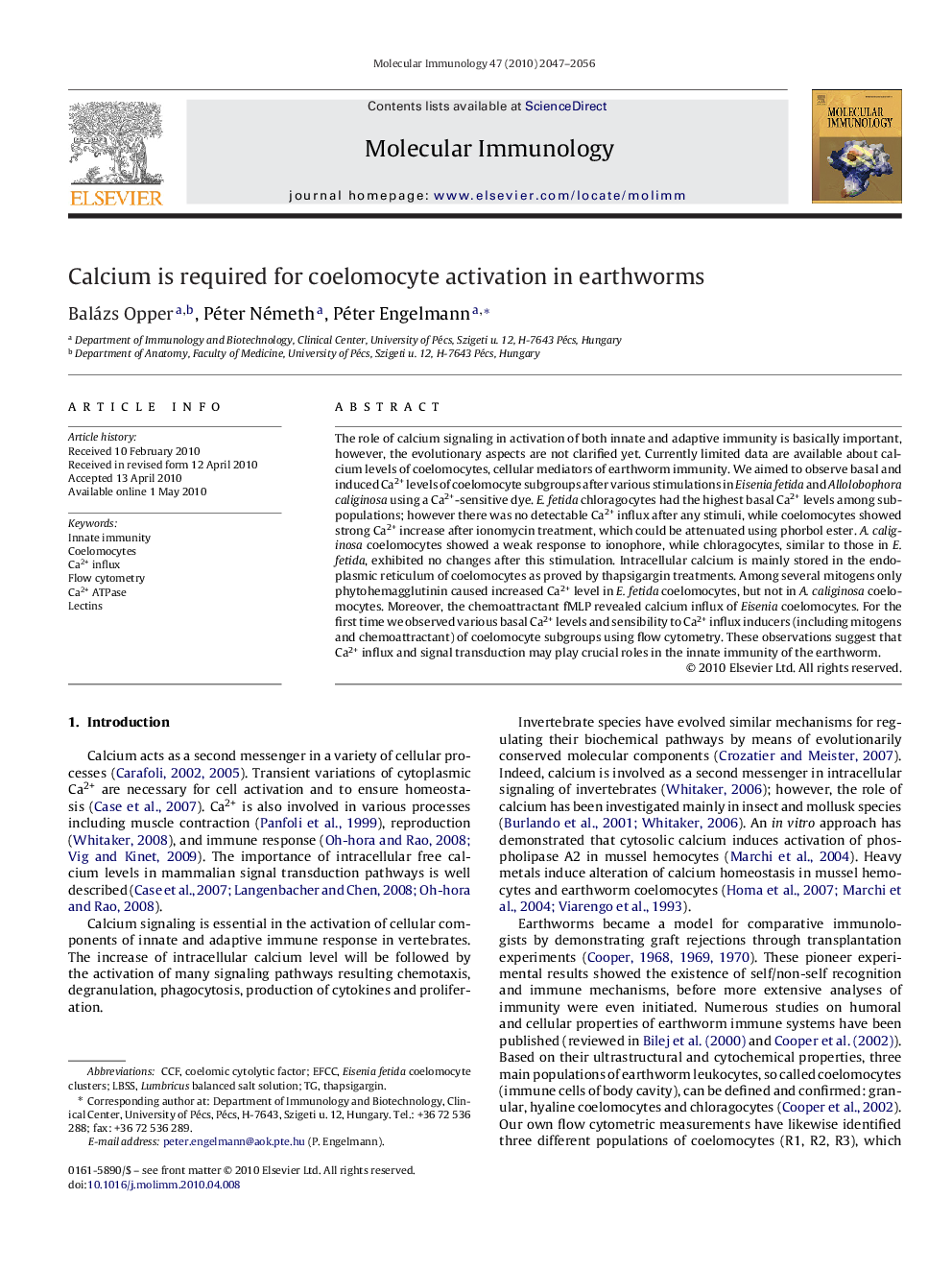| Article ID | Journal | Published Year | Pages | File Type |
|---|---|---|---|---|
| 2832162 | Molecular Immunology | 2010 | 10 Pages |
Abstract
The role of calcium signaling in activation of both innate and adaptive immunity is basically important, however, the evolutionary aspects are not clarified yet. Currently limited data are available about calcium levels of coelomocytes, cellular mediators of earthworm immunity. We aimed to observe basal and induced Ca2+ levels of coelomocyte subgroups after various stimulations in Eisenia fetida and Allolobophora caliginosa using a Ca2+-sensitive dye. E. fetida chloragocytes had the highest basal Ca2+ levels among subpopulations; however there was no detectable Ca2+ influx after any stimuli, while coelomocytes showed strong Ca2+ increase after ionomycin treatment, which could be attenuated using phorbol ester. A. caliginosa coelomocytes showed a weak response to ionophore, while chloragocytes, similar to those in E. fetida, exhibited no changes after this stimulation. Intracellular calcium is mainly stored in the endoplasmic reticulum of coelomocytes as proved by thapsigargin treatments. Among several mitogens only phytohemagglutinin caused increased Ca2+ level in E. fetida coelomocytes, but not in A. caliginosa coelomocytes. Moreover, the chemoattractant fMLP revealed calcium influx of Eisenia coelomocytes. For the first time we observed various basal Ca2+ levels and sensibility to Ca2+ influx inducers (including mitogens and chemoattractant) of coelomocyte subgroups using flow cytometry. These observations suggest that Ca2+ influx and signal transduction may play crucial roles in the innate immunity of the earthworm.
Related Topics
Life Sciences
Biochemistry, Genetics and Molecular Biology
Molecular Biology
Authors
Balázs Opper, Péter Németh, Péter Engelmann,
